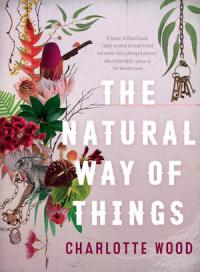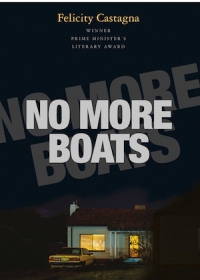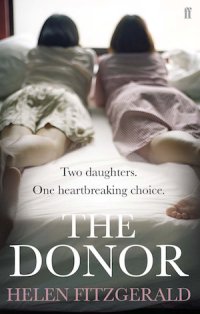 In what has become a bit of a tradition over the past few years, my New Year’s Day post is focused on Australian Women Writers — specifically listing all the titles I have read as part of the Australian Women Writers’ Challenge the year before. (You can see my wrap-up for 2018 here, 2017 here and 2016 here.)
In what has become a bit of a tradition over the past few years, my New Year’s Day post is focused on Australian Women Writers — specifically listing all the titles I have read as part of the Australian Women Writers’ Challenge the year before. (You can see my wrap-up for 2018 here, 2017 here and 2016 here.)
In 2019, I aimed to read 10 books by Australian women writers. At the time I didn’t know I’d be moving back to Australia, so I kept my goal relatively achievable. But when I moved to Fremantle in June I suddenly had access to books — in both the shops and the library — that normally wouldn’t be available in the UK. As a consequence, I read a total of 26 books by female writers.
Here is a list of all the books I read. They have been arranged in alphabetical order by author’s name (click the title to see my full review) and I have tried, where possible, to provide information on availability outside of Australia, but note this is subject to change:

‘Little Gods’ by Jenny Ackland (2018)
A gorgeously evocative coming-of-age story set in Victoria’s mallee region during the 1980s.
Fiction. Only published in Australia. Check bookfinder.com for copies.

‘A Constant Hum’ by Alice Bishop (2019)
The literary equivalent of a concept album, this collection features short stories and flash fiction focused on the aftermath of bush fire.
Fiction. Only published in Australia, but the Kindle edition is available in other markets.

‘New York’ by Lily Brett (2001)
This humorous and entertaining collection of 52 short articles is largely about the author’s own insecurities, anxieties and dislikes, with a special focus on New York life.
Non-fiction. Widely available.

‘Room for a Stranger’ by Melanie Cheng (2019)
A beautiful, bittersweet story about finding friendship in the most unexpected of places.
Fiction. Only published in Australia, but the Kindle edition is available in other markets.

‘Wedderburn: A True Tale of Blood and Dust’ by Maryrose Cuskelly (2018)
A deeply contemplative and gripping analysis of a small-town murder in Australia written very much in the vein of Helen Garner’s true-crime style.
Non-fiction. Only published in Australia. Check bookfinder.com for copies.

‘Springtime: A Ghost Story’ by Michelle de Kretser (2017)
A richly written short story about what it is like to begin a new life in a new city.
Fiction. Only published in Australia, but the Kindle edition is available in other markets.

‘The Bridge’ by Enza Gandolfo (2018)
Moving tale focused on the families whose lives were drastically altered following the collapse of Melbourne’s Westgate Bridge midway through construction in 1970.
Fiction. Widely available.

‘Yellow Notebook: Diaries Volume I, 1978-1987’ by Helen Garner (2019)
This collection of sublime and pithy journal entries spans 10 years of Garner’s life and showcases her ability to capture the tiniest of details to elevate seemingly ordinary occurrences into scenes of extraordinary power.
Non–fiction. Due to be published in the UK in May 2020.

‘The Bride Stripped Bare’ by Nikki Gemmell (2003)
Originally published under the author “anonymous”, this is an erotically charged tale about a married woman’s sexual awakening.
Fiction. Widely available.

‘The Arsonist: A Mind on Fire’ by Chloe Hooper (2019)
A true-crime story looking at the police investigation and subsequent court trial of a man charged with deliberately lighting a fire in Churchill, Central Gippsland that burnt 32,860 hectares and killed 11 people.
Non–fiction. Widely available.

‘Shepherd’ by Catherine Jinks (2019)
A fast-paced chase novel about a teenage poacher from Suffolk who is transported to New South Wales as a convict in 1840.
Fiction. Widely available.

‘Dustfall’ by Michelle Johnston (2018)
A haunting novel following the twin paths of two doctors — 30 years apart — who both settle in the doomed asbestos mining town of Wittenoom to lick their wounds after disastrous career mistakes. (Please note, I never got around to reviewing this one: it’s really excellent.)
Fiction. Paperback available.

‘Pink Mountain on Locust Island’ by Jamie Marina Lau (2018)
The story of a troubled lonely teen living with a drug-addicted father is told in a fragmentary style structured around a series of short vignettes.
Fiction. Only available in Australia, but can be ordered online from Browbooks.com.

‘The Erratics’ by Vicki Laveau-Harvie (2018)
This year’s Stella Prize winner, Laveau-Harvie’s memoir recounts how she had to deal with her Canadian-based elderly parents — one of whom was trying to kill the other — from afar.
Non–fiction. Due to be published in the UK in August 2020.

‘Beauty’ by Bri Lee (2019)
A long-form essay looking at body image and the ways in which young women are conditioned to think that being thin is the only route to happiness and acceptance.
Non-fiction. Only available in Australia. Check bookfinder.com for copies.

‘Eggshell Skull: A memoir about standing up, speaking out and fighting back’ by Bri Lee (2018)
This riveting memoir marries the personal with the political by charting the author’s first year working in the Australian judicial system as she grapples with an eating disorder stemming from her own sexual abuse.
Non-fiction. Only published in Australia. Check bookfinder.com for copies.

‘Too Much Lip’ by Melissa Lucashenko (2018)
Winner of this year’s prestigious Miles Franklin Literary Award, this brash, gritty and hard-hitting novel is about an indigenous family trying to save their land from the local mayor’s plans to build a new prison on it.
Fiction. Only published in Australia. Check bookfinder.com for copies.

‘The Van Apfel Girls Are Gone’ by Felicity McLean (2019)
A disappointing novel about the fictional disappearance of three blonde sisters — the Van Apfel children of the title — from the perspective of their childhood friend, Tikka Malloy.
Fiction. Widely available.

‘The Trespassers’ by Meg Mundell (2019)
A dystopian tale set on a ship filled with Brits headed to Australia, but midway through the voyage, someone is found dead and an unplanned quarantine situation arises.
Fiction. Widely available.

‘Her Father’s Daughter’ by Alice Pung (2013)
This moving memoir explores the author’s early adulthood in Australia, the daughter of two Cambodians who fled the killing fields of the Khmer Rouge when she begins to unearth the story of her father’s frightening past.
Non-fiction. Widely available.

‘Bruny’ by Heather Rose (2019)
A political satire-cum-thriller about a terrorist attack in sleepy Tasmania sometime in the very near future.
Fiction. Only published in Australia. Check bookfinder.com for copies.

‘See What I Have Done’ by Sarah Schmidt (2017)
A fictionalised account of Lizzie Borden’s possible culpability of the brutal murder of her father and stepmother in Massachusetts in the 19th century.
Fiction. Widely available.

‘Axiomatic’ by Maria Tumarkin (2018)
A heady mix of storytelling and reportage, this book looks at five different axioms — an accepted truth — and examines, often in great detail and with much intellectual rigour and anecdotal evidence, as to whether they can be debunked.
Non-fiction. Only available in Australia, but can be ordered online from Browbooks.com.

‘Cusp’ by Josephine Wilson (2005)
A beautifully layered narrative about a mother and daughter trying to recalibrate a sometimes fraught relationship.
Fiction. Only available in Australia, but can be ordered online at uwap.uwa.edu.au/collections/fiction

‘The Weekend’ by Charlotte Wood (2019)
A lovely story about friendship and growing old, it focuses on three women in their 70s who spend a weekend together cleaning out the holiday home of their now-dead friend.
Fiction. Due to be published in the UK in June 2020.

‘Fake’ by Stephanie Wood (2019)
A respected journalist who dreamt of finding a special man to spend the rest of her life with, Wood fell victim to a charlatan — and this is her raw, unflinching account of their relationship.
Non-fiction. Only published in Australia, but the Kindle edition is available in other markets.
Have you read any of these books? Or care to share a great read by an Australian woman writer? Or any woman writer, regardless of nationality?
I have just signed up for the 2020 Australian Women’s Writers Challenge, so expect to see more reviews by Australian women writers to feature on this blog over the course of the year. I am going to aim to read and review 20 books.
If you want to participate, you can sign up via the official website. Please note you don’t need to be an Australian to take part — it’s open to everyone around the world. The more, the merrier, as they say!
























































































